Part II – posted March 28, 2013.
Birth of a “nation.”
On April 1, 1999, the map of Canada changed, giving the Inuit of northern Canada a new homeland.
The Nunavut Land Claims Agreement was the largest land claim ever settled in Canadian history. On paper, it guaranteed that the Inuit were to become active participants in decisions regarding the management of Arctic resources and the lands their ancestors have inhabited for centuries.
Canada’s North is extremely busy these days with regards to resource exploration. Arctic resource development and the effects on the environment is a complex issue.
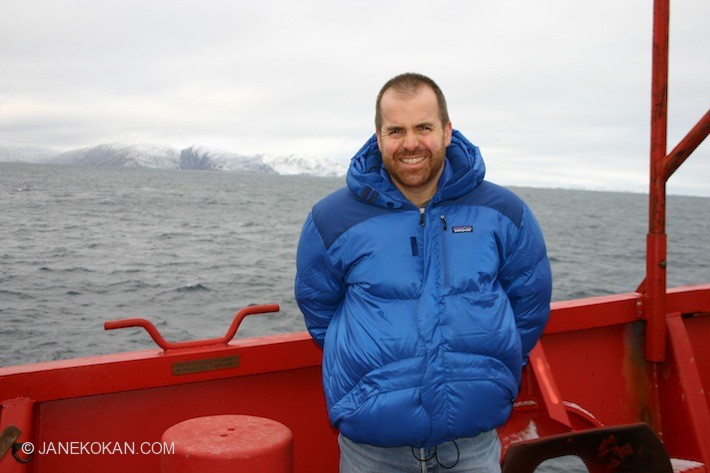
Michael Byers
This is Part II of Jane Kokan’s interview with Arctic expert, Michael Byers who holds the Canada Research Chair in Global Politics and International Law at the University of British Columbia. He is also the author of Who Owns the Arctic? If you missed part one of the interview click here. Part I
Question: Do you believe that the Arctic stands to become a viable international shipping route in coming decades, as melting ice clears the way for cargo movement through corridors never before considered possible. Will there be a spike in Arctic shipping?
MICHAEL BYERS: It is absolutely plausible that we will have major international shipping routes in the Arctic by 2040 or well before that because anybody who has travelled to the Arctic in the last five years will tell you that climate change is advancing much faster than the scientists had feared. The worst-case projections do not equal what is happening right now in the Arctic. And, yes, in any big dark cloud like the big dark cloud of climate change, there is a small silver lining. The silver lining in terms of the Arctic is the accessibility of shipping that will come as the ice melts and yes there will be shorter shipping routes. And I am sure that some companies will use them. But, never forget that’s a big dark cloud and what happens in terms of climate in the Arctic impacts on us further south in terms of changing patterns of precipitation, of winds and ocean currents. We get a lot more extreme weather already in southern Canada. And that is in all likelihood, linked directly to the changes in the Arctic.
Question: The media is full of headlines with regards to Arctic offshore drilling programs. They are on, then off. For example, Shell shut down its 2013 drilling season off the Arctic waters of Alaska. Why?
MB: Now in terms of Arctic oil, the Arctic is an incredibly remote place, which is subject to extreme weather, which will have sea ice in the winter for centuries to come, that is in total darkness for months each year where there is almost a complete absence of infrastructure. Lack of deep water ports for instance, makes it one of the most expensive places in the world to drill for oil. And that is why Shell has shut down its operations north of Alaska.
The only way that oil companies can make money in the Arctic is with massive government subsidy and if that were not present, we’d be seeing a lot more alternative energy. And maybe that would be a good thing.
Question: With increased tanker activity up North, will we be seeing more oil spills?
MB: The risk of pollution from oil spills will come from oil tankers and so if we see oil tankers taking short cuts through the Arctic, or if we see regular cargo ships carrying bunker oil – fuel oil that run into accidents because of maybe a piece of glacial ice, a small iceberg which is called a growler, or maybe because the navigation charts are very poor and they have run aground, then you have a potential catastrophe. Because oil degrades and dissipates very slowly in cold water and the water in the Arctic can actually be below zero degrees Celsius because it is salt water and does not freeze until around minus− 1.5 °C. And in that kind of water there is very little bacterial activity. There is not a whole lot of opportunity for natural degradation to occur. So imagine the Exxon Valdez which occurred in the relatively warm waters off of the southwest coast of Alaska and drop the temperature another five or ten degrees, add in sea ice, a couple thousand more miles of distance in terms of actually mounting an oil spill response, and you have an oil spill in the Northwest Passage, which would cause inter-generational damage and could not be cleaned up.
Question: There are many pressing environmental issues in Canada’s North. Hazardous material and mining waste is ending up in community dumps across the Canadian Arctic, putting people, wildlife and the environment at risk. Why is there a waste management problem up North?

A dump in Resolute Bay, Nunavut
MB: The reason that we have a waste problem in Arctic communities – some of the waste dating back to the Second World War or the Cold War in terms of the Dew Line sites – is because of cost. It costs an awful lot of money to ship things into the Arctic and it costs the exact same amount to ship them out. And so things do not get shipped out.
Now the response to all of this and the response also to any pollution challenge is to simply internalize those external costs. And instead of just pushing the PCBs [Polychlorinated Biphenyls] into a pit and covering them up, no, you should be forced to remove them. Or to pay somebody else to do so for you. Now the response that you will get from companies is that, well we can’t operate in the Arctic if you force us to internalize costs. My answer to that, is well, okay. Why should we be despoiling a nearly pristine part of the planet by essentially subsidizing companies by saying that they don’t need to pay for the pollution they produce? And you’d see less development in the Arctic if you internalized all the costs, but you’d also see a better environment.
Question: The Canadian Forces conduct annual sovereignty exercises in the Arctic. Do operations like Operation Nanook and Operation Nunalivut pollute the pristine Arctic environment?
MB: Well to some degree. Anytime you are burning fossil fuels, you are creating pollution. I think the Canadian Forces are pretty careful these days about spills. But, they are not a huge impact. The real impact comes in terms of industrial pollution from the south and the dumping that occurred in the past, particularly through military activities and may occur today as a result of mining. And anyone who doesn’t think that pollution comes from mining and industrial activities today should go downriver from the Tar Sands in Alberta. Speak to the First Nations at Fort Chipewyan. These are real issues and we have to internalize those now; externalize costs and create a level playing field for all different kinds of economic activity. And on a level playing field the more environmentally friendly ones, will win out.
The other thing to say about the Canadian Forces in terms of Arctic Sovereignty is that the Canadian Forces has a very important role to play in the Arctic in terms of Search and Rescue because they are the only agency – the only department – that can go anywhere at anytime to save lives. And that is their principal function in the Arctic. There is not a war-fighting role in the Arctic. The Arctic is a remarkably peaceful place. There are some constabulary issues to deal with smugglers or illegal immigrants, but those can be dealt with by the RCMP.
The maritime Arctic is dealt with very effectively by the Coast Guard. So yes to the Canadian Forces in terms of search-and rescue. They play an absolutely central role in that regard.
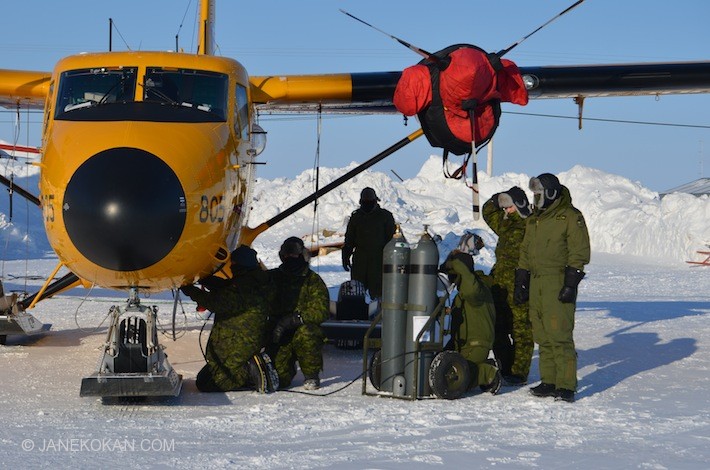
Members of the Canadian Forces attending to a Twin Otter in Resolute Bay
Question: How would you rate Canada’s current search-and-rescue (SAR) capabilities in the Arctic?
MB: The women and men who provide search and rescue through the Canadian Forces are truly remarkable. But, they operate at vast distances, in some cases with inadequate equipment. So, our fixed wing search and rescue aircraft in this country are more than 40 years old. That’s a problem.
A search and rescue helicopter that’s dispatched to the Northwest Passage has to come from several thousands of miles away, either from Vancouver Island or from Labrador or perhaps Nova Scotia. And as a result there is delay built in and the costs are very significant. Other countries don’t do this. During the summer months the U.S. Coast Guard positions two search and rescue helicopters at Barrow, Alaska, on the north coast, on the Arctic Ocean coastline of Alaska because of the response time that that provides
Our search-and-rescue personnel are some of the best in the world, but the lack of government support and the lack of new equipment and forward positioning, means that they cannot compare in terms of their response time to the services of other countries.
The scale of the money involved, is sometimes quite significant, if you dispatch a Cormorant helicopter from Greenwood, Nova Scotia to somewhere in the central Arctic to rescue an Inuit hunter from an ice floe. That’s an operation that costs hundreds of thousands of dollars – just for that one rescue mission. Of course if that helicopter were located at Rankin Inlet, the costs would go down. So when I look at search and rescue in the Arctic, I say, well how much money are we actually saving by not positioning assets further North and insuring that we have good equipment and personnel who are on standby, on short notice, to address these problems. It’s actually sometimes quite expensive to try and save money by keeping assets in the south.
Question: Should the Canadian Rangers also known as the “eyes and the ears of the North” be more engaged in Arctic search-and-rescue? They already provide a military presence in the remote, isolated northern and coastal regions of Canada don’t they?
MB: I am sure there is some bureaucracy that complicates things and the [Canadian] Rangers do provide a search-and-rescue function close to their communities. But there are only 28 communities in Nunavut and Nunavut is one-fifth of the second largest country on earth. So yes, you could have Rangers providing search and rescue within let’s say 100 kilometers of a community and still have 98 per cent of Nunavut unaccounted for. Which is why you need helicopters, which is why you need planes to get that reach to the more remote areas. And so yes, the Rangers are fantastic and among other things, I’d like to see them supplied with small vessels, boats so they can augment their search and rescue capabilities during the summer months. But that will never replace the long-range equipment that’s necessary to do the job. If for instance, a commercial airliner, let’s say a Boeing 777 were to crash-land on Ellesmere Island, that’s not a situation that the Rangers could deal with.
Question: There is talk in light of the recent Canadian army budget cuts that the proposed Canadian Forces Arctic Training Centre in Resolute Bay may be put on the chopping block. Do you believe it is important to have such a training centre in the High Arctic?
MB: I think the idea of training soldiers for cold weather is a really important one in a country that has Arctic conditions across very large parts of the provinces in wintertime. So yes, if there is a need for disaster response in Saskatchewan in winter, then it’s really important to have winter trained soldiers. And Resolute [Bay] strikes me as a good place to do that because of course there are facilities there that are used that were built for scientists to use in the summer. So the idea of having a dual functional dormitory and cafeteria and warehouse in Resolute to be used for training soldiers in the winter and for scientific support – for housing scientists in the summer – is simply common sense. I fully support it.
Question: What is Canada’s contribution to Arctic Space programs?
Canada’s best Arctic asset is a synthetic aperture radar satellite called RADARSAT-2. And to its credit the Harper government blocked the sale of that satellite to a US defence contractor, four or five years ago. It’s our eye in the sky in the Arctic. It can see through clouds at night, it can track vessels in Arctic waters. It can measure the thickness and the character of Arctic sea ice. We’re a leader when it comes to these types of satellites and I hope we stay the leader.
Question: Any final Arctic thoughts?
The Arctic is an incredibly beautiful place that is full of opportunity for Arctic nations, including Canada. And well, we talk a good talk in Canada about the Arctic, but we don’t actually walk the walk. And there are massive challenges, incredible responsibilities but also fabulous opportunities. If we as a country – and that centrally includes the federal government – were to decide that we were serious about an Arctic future – well, there are immense opportunities. There are other countries in the world that would die for this opportunity – and yet we seem to be sitting on our hands.
More to come:
On March 30th, in Part III, there will be an interview with Paul Amagoalik of Resolute Bay, an Inuit hunter and son of two High Arctic exiles. In 1953, Paul was born on the coast guard ship the C.D. Howe which transported the Inuit families from Inukjuak, Northern Quebec, to establish Resolute Bay and Grise Fiord. Paul is the son of the late artist Simeonie Amagoalik who carved the stunning and haunting stone monument dedicated to the High Arctic exiles in Resolute Bay. Read Part III
For more information on the Arctic Exile Monument Project please visit: www.tunngavik.com


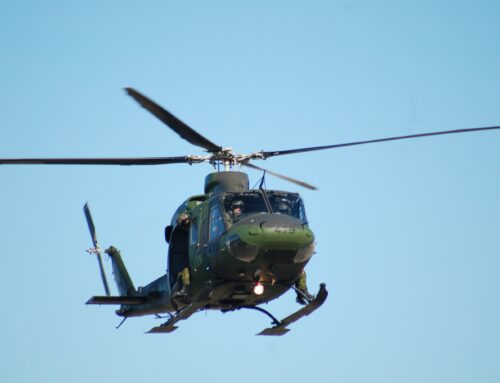
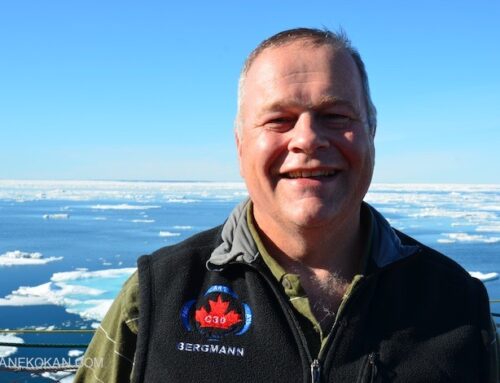
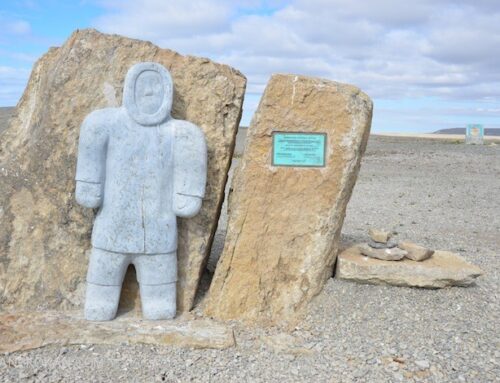
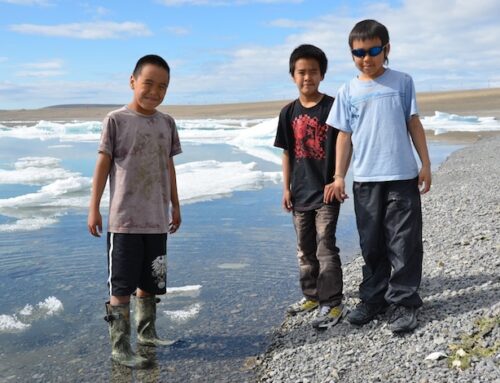
[…] Up North (1) Arctic expert on a proposed CF arctic training centre in the far north “…. I think the idea of training soldiers for cold weather is a really important one […]
[…] Jane Kokan | Challenges, opportunities as well as republic structure in … […]